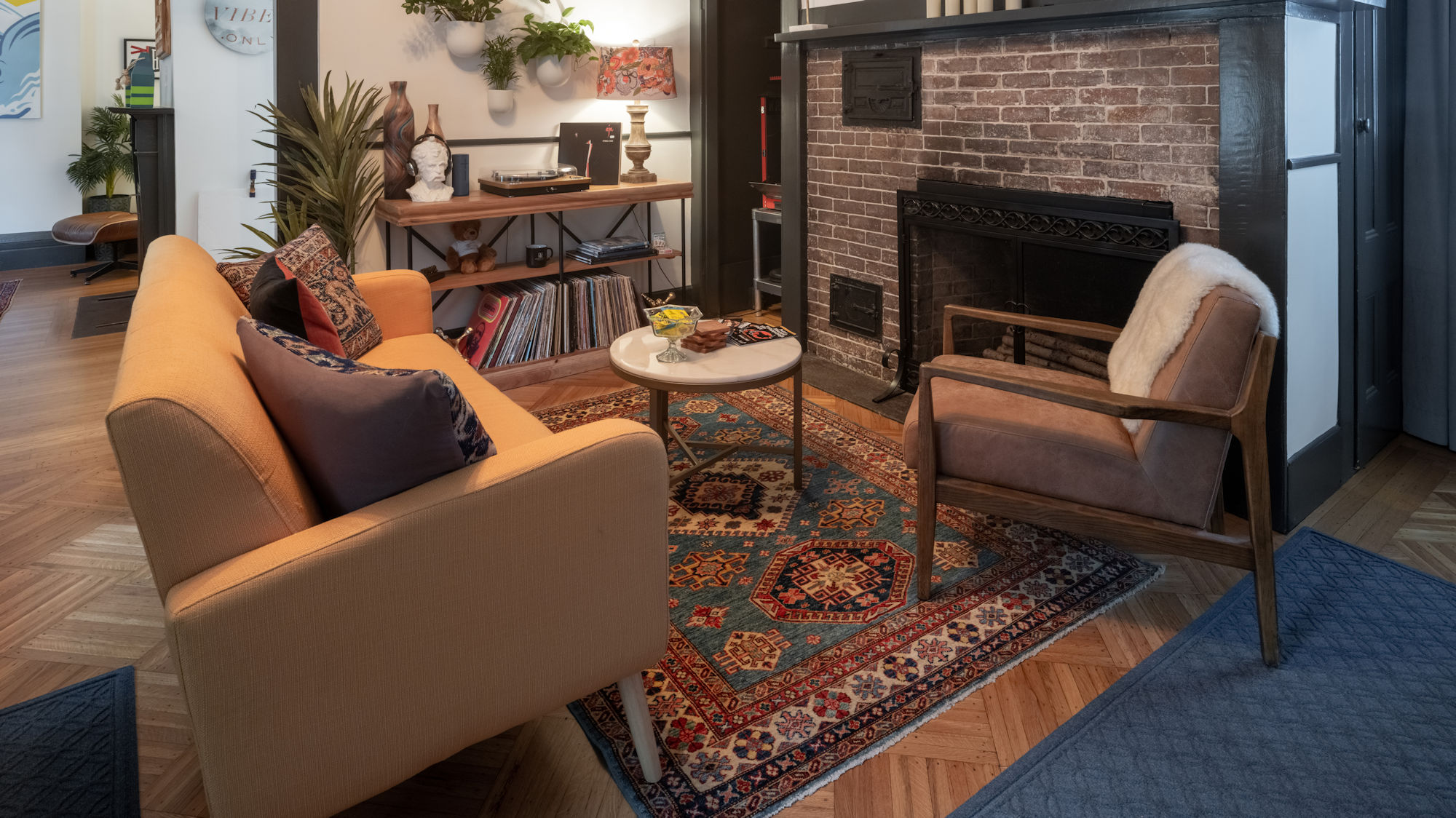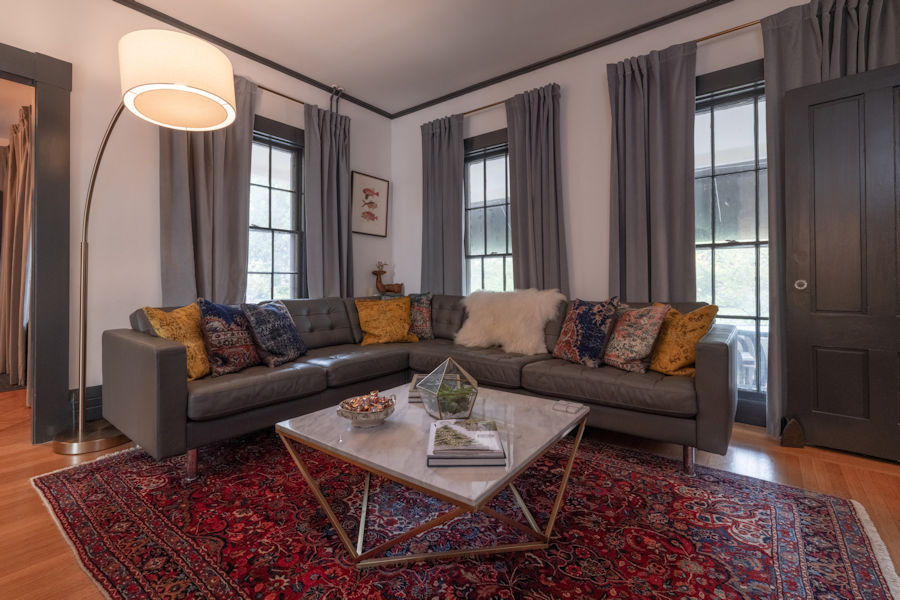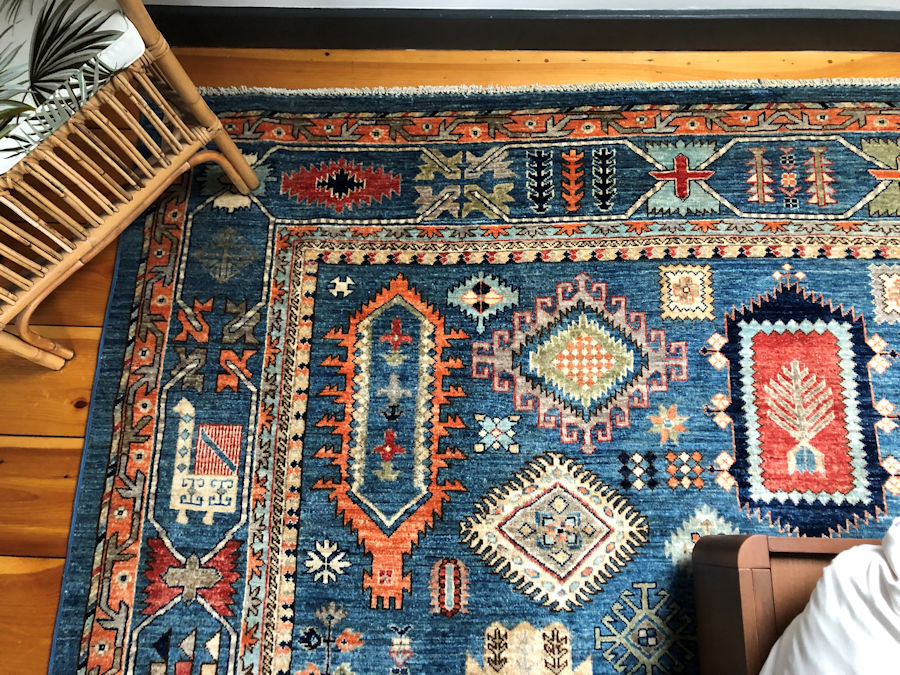A Closer Look at The Rugs Of Addison Choate

The Rugs Of Addison Choate
A wise man once taught us that you build a room from the ground up. That is how we approached the redesign of Addison Choate, an historic 1851 property in Rockport, Massachusetts.
Over the years, we have fallen in love with handwoven rugs for a number of reasons: their unique style, vibrant color, durability, and the incredible care and craftsmanship goes into each individual rug. They are truly all works of art with intricate designs and an incredible amount of care and effort goes into each rug.
So, we thought it would be fun to take a closer look at some of the rugs throughout our Rockport MA Hotel and take a deeper dive into the styles and history of the designs. So let’ dig in!
When running an inn there is a lot of guest traffic coming in and out and durability of flooring is important. There is no question that handwoven rugs can stand the test of time. Did you know that the oldest handwoven rug is the Pazyryk rug that dates back to approximately 400 BCE? Pretty strong evidence that these rugs are durable.

One rug that we absolutely love and can definitely stand the test of time is the Bijar that is in the living room of the Addison Choate. Known as the “Iron Rug Of Persia” Bijar rugs have a reputation of being incredibly dense with a very tight weave. That pile density is accomplished through wet weaving and beating the threads with a special metal tool.
Handwoven rugs are named for the regions that they were made, and Bijar Rugs came from Persia or modern-day Iran. Bijar is in the northwest region of Iran and has a rich rug making tradition dating back to about 500 BCE. There is a wide variety of Bijar designs because there are a variety of tribes in the region that produce these rugs.
We love the geometric design and the vibrant color of this rug and think it is a great rug for this high traffic area.
Another true Persian rug is the Nain that is located in our Dog Watch Suite. Nain is a region is central Iran that is newer to the rug making game, but has developed a reputation for beautiful design and very high quality craftsmanship.
Traditional Nain rugs have a central medallion that is very recognizable and is surrounded by a floral pattern. The blue rug above is the Nain and the red rug in back is actually a Persian Vis. You cannot make out the medallion in the photo because it is covered by the trunk, but there is a beautiful central medallion.
The quality of Nain rugs is determined by the knotting density as well as the quality of materials utilized. Many of the finer Nains will be made with silk accents and some made entirely out of silk. Ours isn’t quite that nice, but we love it nonetheless! You can check out some other beautiful examples of Nain rugs here.
Bokhara rugs are some of the most stylish and affordable handwoven rugs on the market. The traditional color that you will often find is red, but we have seen them in every color from cream, to blue to even the pink Bokhara rug that we have in our Madame Cheng room at Sally Webster.
The Bokhara pattern is inspired by traditional Persian designs that influenced weavers in Pakistan and Afghanistan. Bokhara rugs were initially crafted by nomadic tribes and ultimately in both Pakistan and India.
Bokhara rugs are made with wool and often have a nice soft feel. There is a wide quality spectrum when it comes to Bokhara rugs which ultimately comes down to the quality of the wool used in the manufacturing process as well as the knot density. The higher the knot density, the better design clarity and the more durable the rug.
But we love the traditional Bokhara pattern and it gives us old sea merchant vibes. The reds and blues work very well with coastal design, and we have used it in multiple rooms at both Addison Choate and Sally Webster.
Another traditional rug style that we absolutely love is Tabriz. This is one of the largest cities in Iran and, like Bijar, it is located in the northwest region of the country.
Known for very skilled weavers, the rug makers in Tabriz and the surrounding villages have been renowned for hundreds of years. Tabriz rugs are made with Turkish knots as opposed to Persian knots making them more symmetrical and easy to identify.
The Tabriz rug in Cut in Run has the Herati design or fish design and is known as a Mahi Tabriz. We love the geometric nature, the vibrant color pattern and the impressive quality and think it is the perfect fit for this room.
Our latest addition to our collection is this beautiful Afghan Ersari rug that is now in our Crow’s Nest Suite. We love the tribal and geometric patterns as well as the rich cobalt blue colors that are achieved using vegetable dyes.

These Ersari rugs are a more modern type of rug and the geometric and tribal patterns remind us a little of Kazak rugs. The Ersari rugs feature patterns of the Ersari Turkoman tribe primarily from Turkemistan and Uzbekistan.
So that wraps up our exploration into some of the rugs at Addison Choate. We hope that you enjoyed learning a little more about these wonderful works of art and that you will be able to enjoy them first hand some day at our Rockport MA Hotel. We feel lucky to have this beautiful collection. What’s incredible is that every handwoven rug is unique because even the mood of the weaver can impact the crafting process and no two rugs are the same. It’s kind of a refreshing sentiment in today’s world.